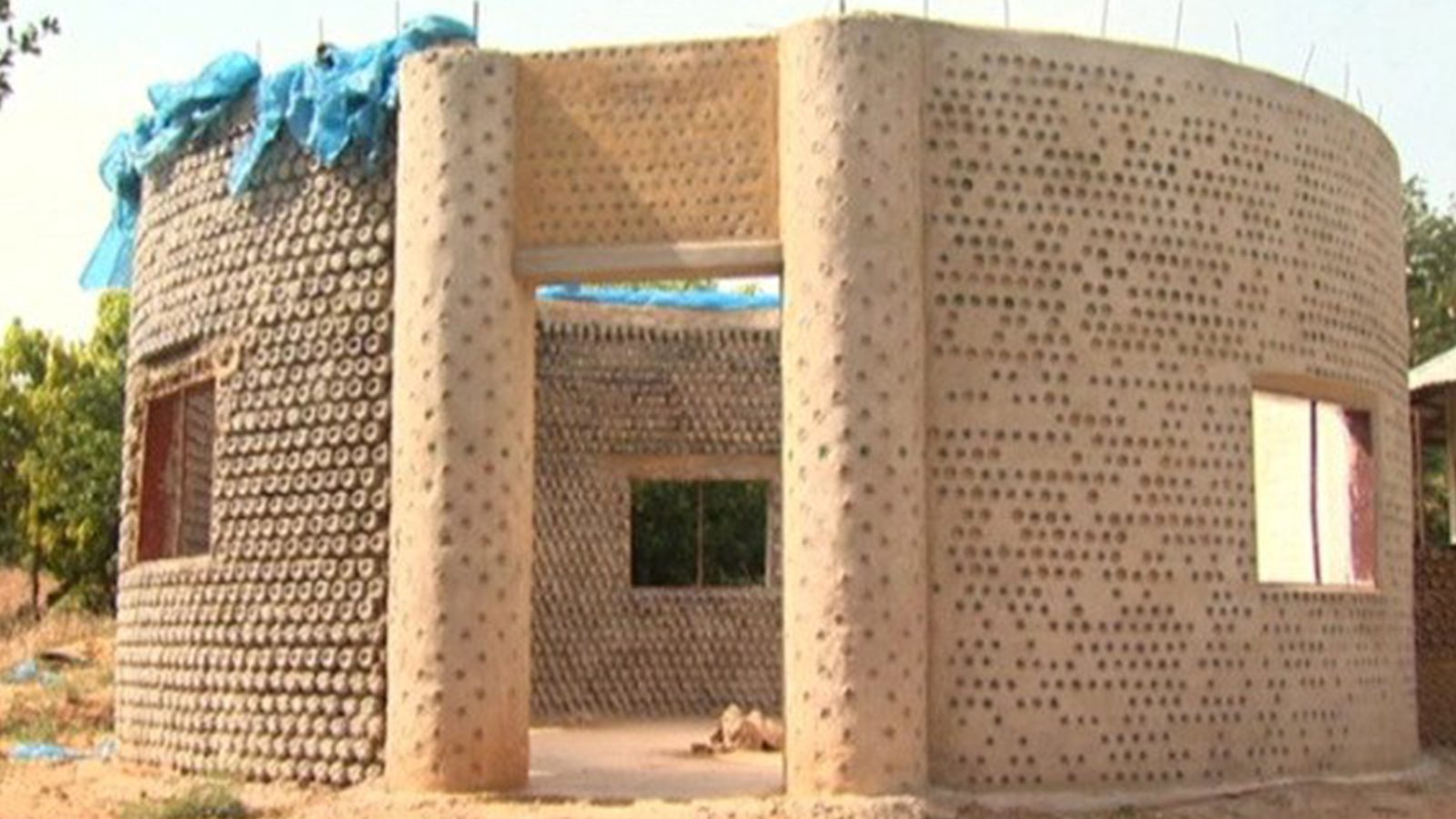With all the plastic waste in our world, some people have decided to repurpose it into something amazing. In Nigeria, companies have begun using plastic bottles to build homes. Called “bottle brick” technology, the building materials can easily withstand powerful earthquakes.
Nigeria’s first home constructed from recycled plastic bottles sits in the village of Yelwa. It became so popular that tourists come from all over to see it. Government officials and traditional leaders from Nigeria also visit to see the unique structure.
Trader Nuhu Dangote traveled from the state capital, Kaduna, to witness the architectural masterpiece firsthand. He couldn’t believe it was built using only plastic bottles and mud. Once he saw it, he told everyone he knew to visit the eco-friendly home.
You might not think that plastic bottles would look aesthetically pleasing, but they’re surprisingly beautiful. The round bottoms of the bottles face outside the home, so it produces an eye-catching design. The bottles get packed with sand and then placed on their side. Next, they stack the “bricks” on top of each other and “glue” them together using mud.
In northern Nigeria, homes are typically built in a round, rather than square, fashion. These plastic bottle homes were developed to keep the traditional look alive. While the homes look beautiful, the developers built them with the environment as first priority.
Since then, companies expanded their production and built twenty-five structures on the land. A Greek businessman and environmentalist donated money for the project. Hopefully, plastic bottle homes like these will become commonplace in the future.
Each of these homes comes equipped with a bedroom, living room, bathroom, toilet and kitchen. Approximately 7,800 plastic bottles are used in production.
The plastic bottle homes provide affordable, safe housing for millions
The “bottle brick” technology began nine years ago in India, South America and Central America. The homes provide people with an affordable, eco-friendly option, as traditional brick homes are quite expensive. Yahaya Ahmed of Nigeria’s Development Association for Renewable Energies, says plastic bottle houses cost 67% less than a home built from concrete and brick.
Not to mention, houses made of plastic bottles have the upper hand regarding durability and safety. He went on to say that compacted sand inside a bottle has twenty times the strength of bricks. His company even plans on building a three-story building with the technology.
The bottle houses also help insulate the living space from the intense Nigerian climate. The sand helps block the sun’s heat, which keeps temperatures comfortable indoors. Plus, the compact sand makes the structure bulletproof, improving the home’s safety. In high-crime areas of northern Nigeria, the durable structure gives residents peace of mind.
The company first lays a firm concrete foundation to create a stable structure. Builders use a sieve to sift the sand for the walls to make them compact. This process removes stones from the sand to pass through the bottles’ mouths.
While many people have expressed their excitement about the bottled brick homes, not everyone shares the sentiment. Some people feel that the increased demand for sand will make it too expensive.
Mumuni Oladele, a mason in the southern Lagos, already sees a problem with the building method. He often sees companies digging everywhere for sand to build houses. He believes that’s just a glimpse of the future, as the demand for affordable homes increases.
Despite the concerns, it seems the benefits far outweigh the costs.
The plastic bottle homes give people jobs and remove discarded plastic from the environment
In the state capital of Kaduna, the building project gives children a way to earn money for the future. Whether they’re unemployed or not in school, children can find purpose and meaning in helping to build the homes. 15-year-old Shehu Usman, who works on the site, says he enjoys both working and earning an income. He hopes to have a plastic bottle at home when he grows up, too.
After the 25 homes have been completed, the Development Association for Renewable Energies will begin working on a school. It will also be built on the estate and give street children like Shehu an opportunity to attend.
In addition to the schooling and job opportunities, the project obviously does wonders for the environment. Plastic pollution in developing countries like Nigeria is a growing problem. Unlike first-world countries like the US, they lack adequate recycling centers and waste management. As a result, plastic piles up, lining the main streets and alleyways.
According to market research company Zenith International data, most water is sold in small plastic bags in Nigeria. However, the bottled water market continues to grow, and accounts for 20-25% of sales. This equates to around 500m liters of water per year.
Then, the discarded plastic bottles often end up in the environment. However, street vendors sometimes collect them to sell products such as peanuts. Other citizens utilize them for storage. With the plastic bottle homes project, there’s now a huge demand for these bottles.
The developers have gone to hotels, restaurants, homes, and foreign embassies asking for extra plastic bottles. This way, the consumer puts waste products to good use, and it doesn’t pollute the environment or waterways.
Final thoughts on the homes built from plastic bottles in Nigeria
Who would’ve thought plastic bottles could be used as home walls? One housing development company in Nigeria envisioned building affordable homes using these bottles. That way, the homes would serve two purposes: giving people a roof over their heads and cleaning the environment. It did even more for the community, providing jobs for needy people.
Eventually, the company will construct a school on the property so children helping with the project can receive a good education. Perhaps the project will expand even more into other parts of Africa and the world.
The housing project shows that plastic bottles don’t have to end up in landfills. With a bit of ingenuity, people can repurpose discarded plastics into something beautiful, like these “bottle brick” homes.















 Community
Community

